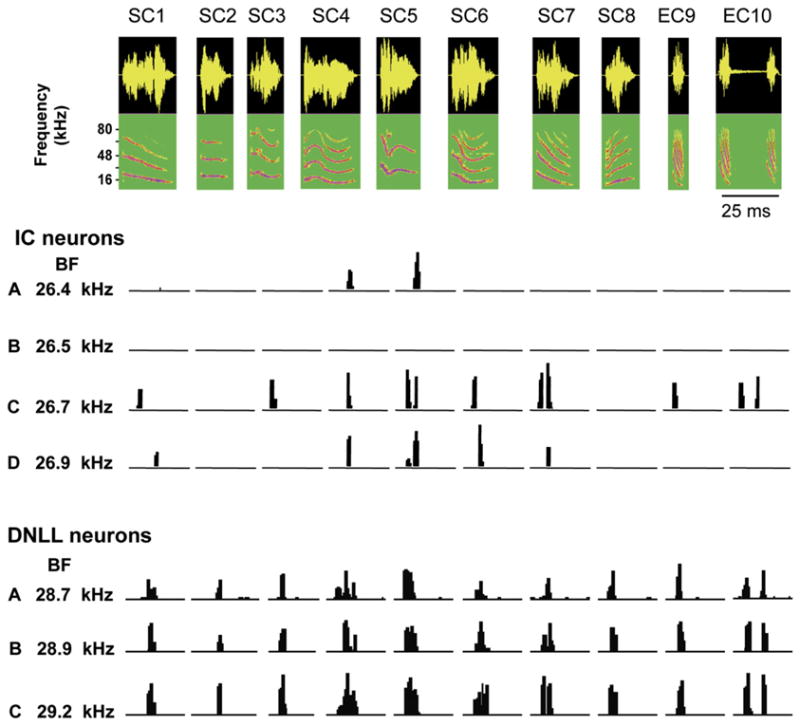Fig. 4.

Responses of 4 ICc neurons and 3 DNLL neurons to 10 species-specific calls. Eight of the calls (SC–SC8) are social communication calls and two others (EC9–EC10) are echolocation calls. The 4 ICc cells are isofrequency and all tuned to about 26 kHz and the 3 DNLL cells are all tuned close to 29 kHz. The ICc cells were selective in that each fired to only a subset of the 10 calls although each of the calls had suprathreshold energy that swept through each neuron's excitatory tuning curve. The selectivity was also heterogeneous in that each cell fired to a particular subset of calls that was different from the subset to which the other cells fired. One cell failed to fire to any of the calls. The DNLL cells, in contrast, were unselective and fired to all 10 calls because each of the calls had energy that encroached upon their excitatory tuning curves. Source: Klug et al. (2002), and Bauer et al., 2002.
